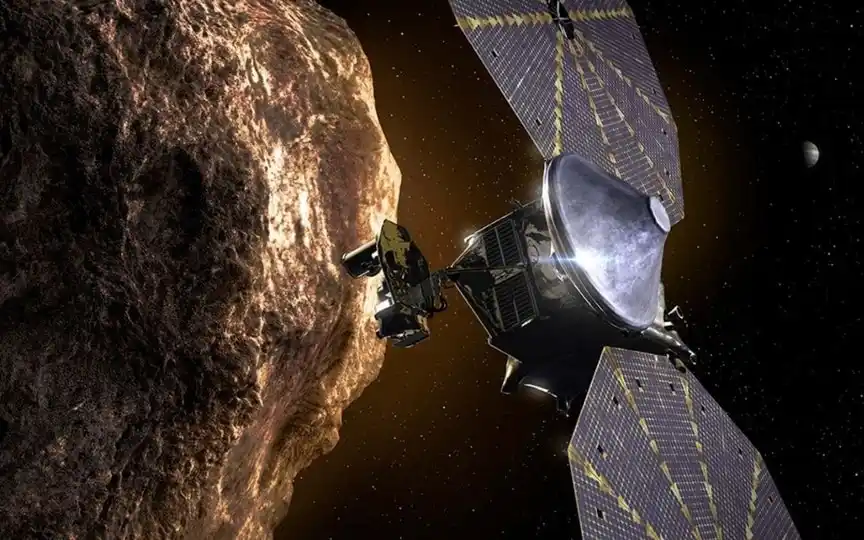NASA’s Lucy Spacecraft to Make Historic Flyby of Asteroid Dinikinesh
Throughout history, asteroids have presented a danger to Earth due to their close encounters. Although many of these ancient celestial objects have passed by our planet at a near distance, a handful of them have actually collided with Earth, significantly changing the course of events. The most renowned asteroid impact in history occurred 65 million years ago, leading to the extinction of dinosaurs. Consequently, it is crucial for us to investigate and examine these cosmic rocks at close range in order to reduce uncertainties regarding their close approaches and forecast any potential collisions. This is precisely where NASA’s Lucy mission plays a vital role.
What is Lucy’s mission?
To better understand asteroids and study those outside the asteroid belt, NASA launched its Lucy mission on October 16, 2021, from the Kennedy Space Center in Cape Canaveral, Florida. According to NASA, its purpose is to study Trojans, asteroids that orbit the sun in two groups (or swarms). It is built to search for Trojan asteroids millions of kilometers from Earth. Earlier this year, the Lucy spacecraft discovered the first Trojan asteroid, Dinikinesh, which is about half a kilometer wide.
NASA has now announced that the Lucy spacecraft will make its first flyby of Dinikinesh today, November 1st. This is the first visit to an asteroid during Lucy’s 12-year journey. But what is the point of this approach? NASA says it’s a technical test that tests systems and methods designed to keep the asteroid in the field of view of science instruments as the spacecraft flies by at speeds of more than 10,000 miles per hour.
Previous findings
Although this will be Lucy’s first approach to an asteroid, it has already made an amazing discovery. In August last year, it discovered a Trojan asteroid around Jupiter called Polymele, which has its own satellite. To detect this, the Lucy Mission team planned to study the occultation of the star as the asteroid passed by it.
Then in October, the spacecraft performed a slingshot maneuver to gain momentum as it headed toward the unknown in an effort to find and study Trojan asteroids. During this movement, it came up to 350 kilometers above the Earth and was visible from the surface of the planet. Soon after, it took a few snapshots of the Moon to properly calibrate its equipment.




